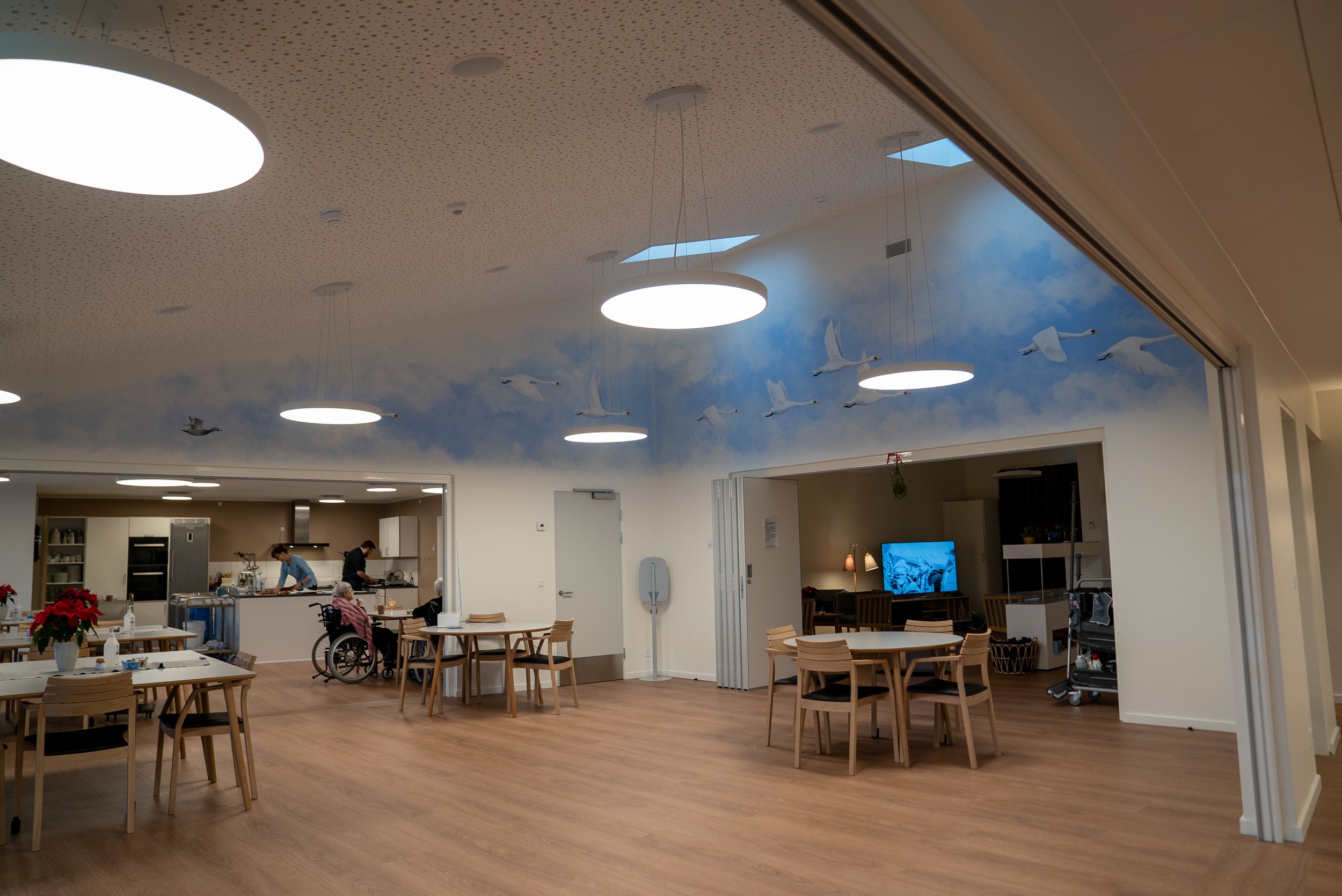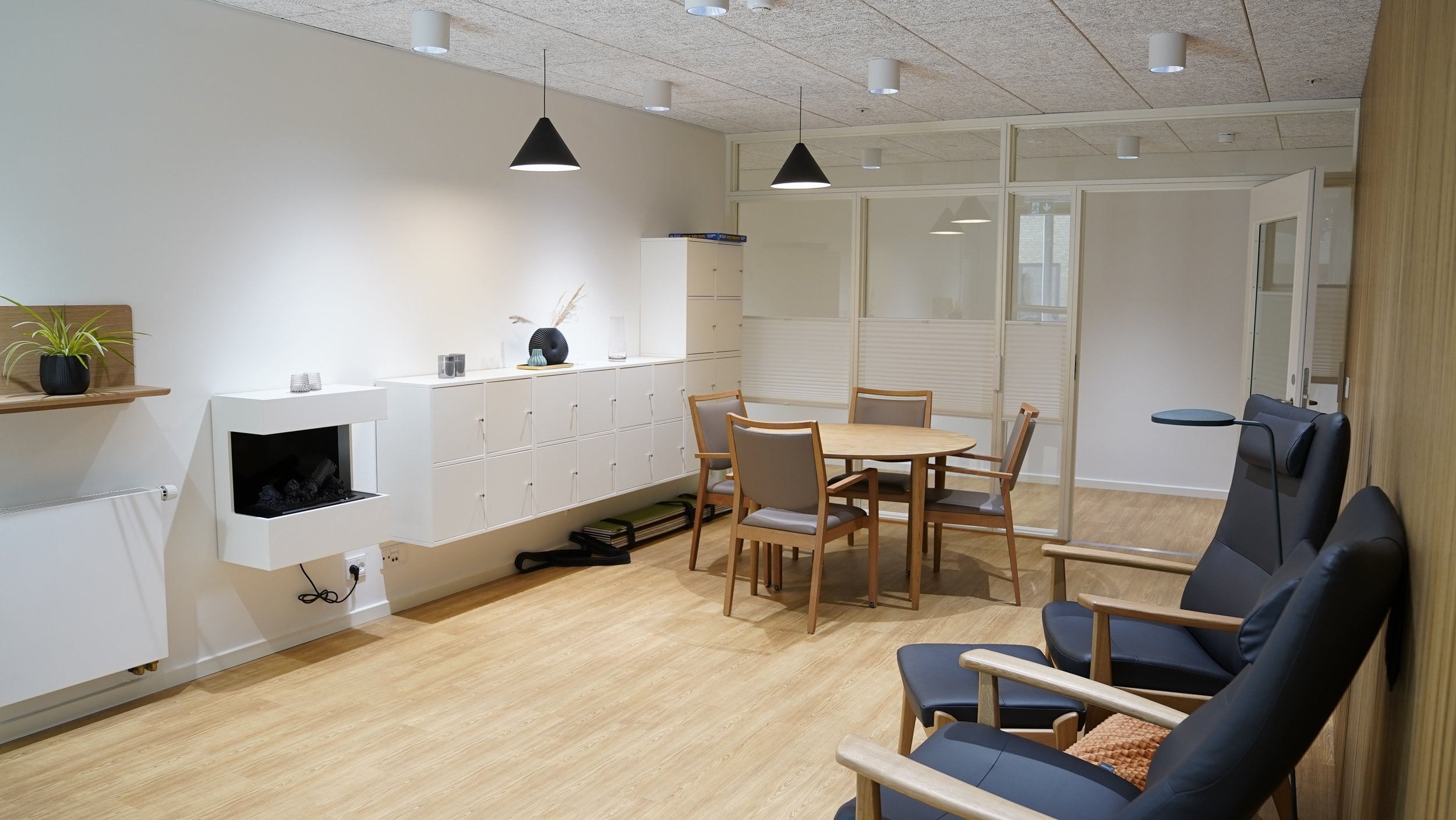LED in the public sector: Care homes
We've now reached the fourth and final post in our mini-series of blogs on the benefits of using LED in the public sector. Previously, we've covered how hospitals and schools can benefit from LED lighting, and in this section we take a closer look at why nursing homes and senior centers should focus on LED.
Our society is currently undergoing major demographic changes. There are more and more people on the planet, which means that the number of people requiring care will increase significantly. Nursing homes and senior centers are some of the public institutions that will be challenged both in terms of quantity and quality.
For example, the quality of care homes can be optimized by replacing existing lighting with LEDs. In addition to the economic and environmental benefits associated with LED, LEDs can improve the quality of life for the elderly. Vision deteriorates with age, as does the perception of depth and color, which is why there is a great need for proper and healthy lighting in the country's nursing homes and senior centers.
It is scientifically proven that light has a biological effect on humans. Our circadian rhythm can be disrupted by artificial light, which can negatively affect our health and well-being. This is where LED comes in.
LED differs from traditional light sources by being able to adjust the color temperature in a room. One of the options is called circadian lighting, which can be described as dynamic lighting control according to the rhythm of the day. In the morning and evening, the LEDs will light up with a warmer color temperature than in the afternoon when the sun is high in the sky. So instead of exposing residents to a monotonous, uniform light all day, the color temperature of the entire nursing home will automatically adjust throughout the day.
In addition to this dynamic lighting control, both residents and staff will also be able to manually adjust the color temperature as needed. For example, if the elderly are relaxing in their room, a warmer light is needed than if they are eating or reading a book.
An LED lighting solution is therefore optimal for nursing homes and senior centers. The overview below aims to highlight the benefits of LED lighting for residents, staff and the care homes themselves.
Residents: Studies show that seniors become more active and spend more time in common areas when they are equipped with circadian lighting. In addition, this lighting improves residents' sleep patterns and eating habits, which all contribute to improving the quality of life of the elderly. This makes everyday life easier and better for the elderly, with automatic lighting control helping to maintain a healthy circadian rhythm.
Employees: This also affects employees, who benefit from better working conditions thanks to dynamic lighting control. First and foremost, employees are ensured a healthy circadian rhythm in the same way as the elderly. In addition, the elderly sleep better at night, reducing the need for care at this time of day. *Circadian lighting can alleviate many of the challenges employees face during the workday.
Nursing homes and senior centers: As staff workloads are reduced, nursing homes may choose to reduce the number of employees. In addition, LED lighting is more energy efficient compared to traditional light sources, and LEDs are virtually maintenance-free due to their long lifespan. Therefore, the economic benefits mean that the investment in LED lighting is quickly recouped. All in all, with LED, senior centers will be able to offer their residents the most optimal conditions.




